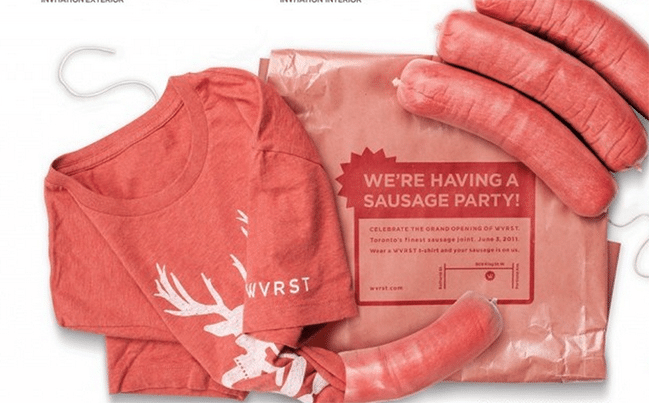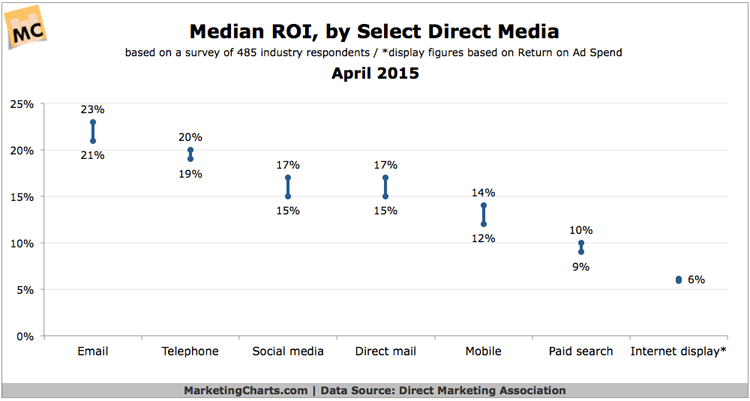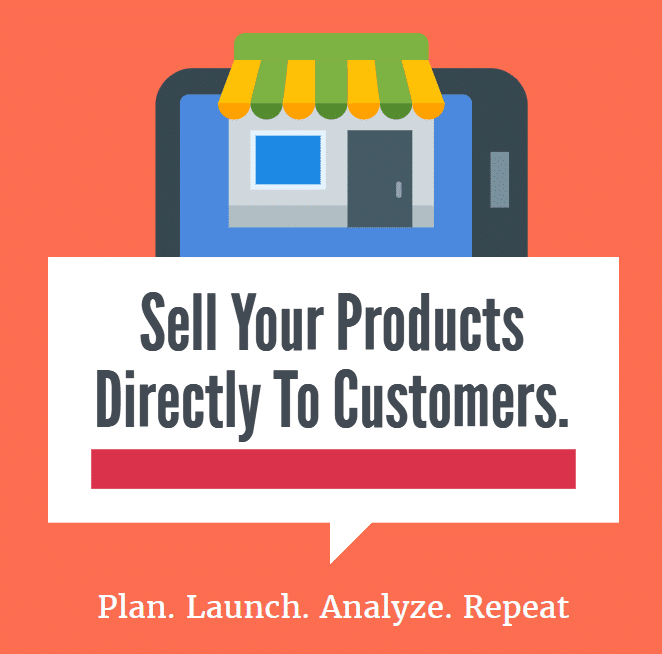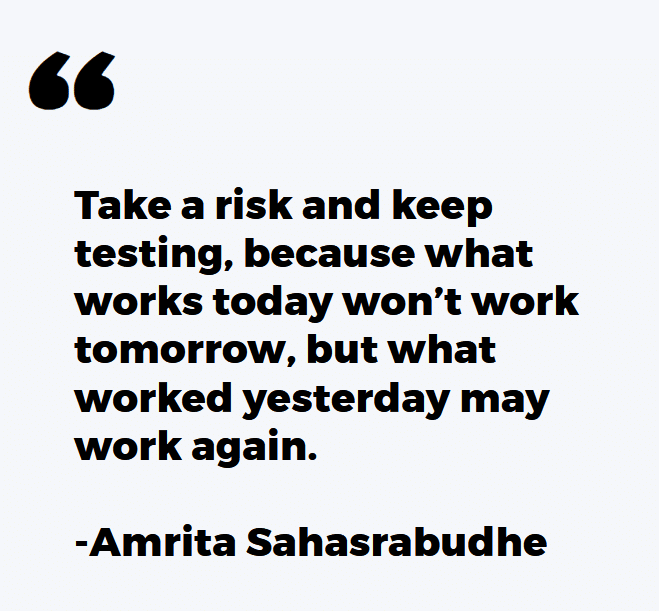Believe it or not, direct marketing, which seems like it has been around forever, is a relatively new concept.
For example, in 1872, one of the pioneers of direct marketing, Aaron Montgomery, produced the first mail-order catalog for his business, in which he bought products directly from the source, and then resold them through a catalogue he sent directly to customers. Without a middlemen, i.e the general store, Ward was able to resell products at drastically lower prices.
Eventually, nearly 100 years later in 1967, Lester Wunderman coined the term “direct marketing” for the first time (Lester was also responsible for notable achievements such as the toll-free 1-800 number).
In its relatively short history, Direct Marketing has changed a lot, while still adhering to some of the fundamental principles that made it attractive in Montgomery’s day.
What Is Direct Marketing?
The definition of direct marketing is the business of selling products or services directly to the public, e.g. by mail order or telephone selling, rather than through retailers. This essentially means that the product / service owner and the customer are communicating directly, without an intermediate.
So, why is this an attractive proposition?
Well, for starters, direct marketing allows you to very easily measure the success of a campaign. For example, say I send 1000 people an email marketing a new product, and as a result 10 people from this group buy.
I know that I have a 1% conversion rate on that offer, and have good reason to believe that if I send out another 1000 emails to a similar demographic, I’m likely to get the same response.
Contrast that with say, a television ad, where it’s not really clear how many people saw it, and how many people bought the product purely as a result of that ad.
Additionally, direct marketing offers you a lot of control. Expanding on the above example, let’s say that before I emailed 1000 people, I instead emailed just a small sample size of 50 to 100 people and measured the response.
In doing so, I can get early measurements and compare those against my needs / assumptions to see if it’s worth emailing the other 900 people, or if instead I should spend more time working on my pitch or target a new audience altogether.
Finally, direct marketing is easy to optimize. Again, expanding on the above example, let’s say I carve out not just one sample size of 50, but two. I can send one offer to one group, and a variation of that same offer to the other and see which one produces better results. This is called split testing or A / B testing, and it’s extremely valuable, as it allows you to compare two approaches in a statistically significant way to choose the more optimal approach to introduce to the whole.
What Are Some Direct Marketing Examples?
To give an example of what direct marketing looks like, consider the campaign run by the sausage making company WVRST to announce their grand opening. WVRST cleverly designed t-shirts in the shape and style of sausages, even using butcher paper to wrap them.
The shirts, sent directly to bloggers, influencers, and foodies, promoted the company and contained an invitation to the grand opening.

What Are The Channels Of Direct Marketing?
Although the concept of direct marketing is fairly singular, the channels are not – there are many ways you can directly market to your customer base, such as:
- Email marketing
- Telemarketing
- Direct mail
- Couponing
- Direct Advertising
- Broadcast Faxing
- Direct Selling
The choice of one over the other often depends on a cost benefit analysis i.e how much does it cost to run a campaign through a particular channel compared with how much revenue it will generate for the business.
Thus, determining which channel to use is a very personal choice, however, it’s important to note that marketing channels are not mutually exclusive; you can promote through multiple channels at the same time.
Direct Marketing: Digital vs. Physical
You may have noticed that some of the channels mentioned above were digital, whereas others were physical.
Well, it should come as no surprise that direct marketing can be applied to both digital channels and physical channels of which the distinction should be pretty clear.
For example, direct mail marketing is a physical channel, whereas direct email marketing is a digital channel – but both are still direct marketing.
That said, there are huge differences between channels, specifically between digital vs physical direct marketing channels, that should be understood.
Some of the traditional benefits of digital marketing channels are:
- Lower Costs – Digital media typically has lower costs because the physical aspect (paper, ink) has been removed, and there are low cost tools that help you create images and online media.
- Less Labor – Digital media often requires less labor to produce the creative that will interact with the customer, especially when there are outsourced workers that can do it for you.
- Faster Campaigns – Digital campaigns from start to finish generally take less time. For example, it’s very possible to launch a digital campaign in a matter of a few hours, which would be nearly impossible to do for a mail campaign.
That said, there are still some benefits to more traditional approaches to direct marketing, for example, a 2009 study by Bangor University cited that direct marketing / physical material was more real to the brain, created stronger brand emotions, and led to a greater internalization of the ad. As a result, it may produce better response rates with certain groups – especially older ones.
At the end of the day, the choice of digital vs. physical really comes down to ROI, which is something that needs to be tested because it’s unique to your business, your costs, and your market.
For a general industry sense, a Marketing Chart was released in 2015 showing median ROI figures for select Direct Media:

How Do You Launch A Direct Marketing Campaign?

While there is no singular method to launching a direct marketing campaign, there is a general framework that you should follow.
- Determine your offer – Firstly, what are you selling, who would benefit from it, and why? Understanding your value proposition is key to choosing your marketing and crafting your offer later on.
- Select your target market – Who are you going to be marketing to? Try to get as specific and relevant as possible, only broadening your reach when you feel you need more people to reach out to. The more targeted your audience, the more targeted you can make your approach. Remember, however, that while adding data to flush out your target market is good, you need a way to actually collect this data and your audience.
- Choose your channel – Go back to the section on direct marketing channels and decide which one you are going to test. Consider which one you think will provide you with the highest ROI by weighing the setup and launch costs against the prospective response rate you hope to get through the channel. Do you think your market will respond better to email or telephone (or something else)? How much will it cost you to send a physical mail vs. an email?
- Craft your pitch – Next, put together the offer that you’re going to be sending out, and make sure the style of the creative (size, colors, user flow, language, etc) all match your target audience and selected channel. If email is your choice, we have you covered here with outreach scripts.
- Set expectations – Before diving in head first, do the math to determine what are likely outcomes, perhaps based on past campaigns you’ve run or research you’ve done elsewhere. Naturally, make sure you’ve defined exactly what it will mean for a customer to convert so that when the time comes you’ll be able to effectively measure your ROI.
- Segment your market (optional) – Ideally, break your market into tiny segments, large enough to collect statistically significant data, while small enough to balance your investment risks. Try testing two or more offer variations to see which one performs better on a small scale.
- Launch – Finally, launch it. Typically, you’ll need a tool or platform off which to launch your campaign. Which leads to our next section…
What Tools Can You Use For Direct Marketing?
There are many, many tools that can aid you in your direct marketing campaigns, such as lead generation tools to help you generate your list of prospects to outreach tools, which will help you actually launch the campaign.
When it comes to evaluating a good tool, ask yourself:
- Is this tool saving me time, money, or aiding in something else such that the benefits of using the tool outperform the cost of a subscription?
- Is this tool providing me with additional analytics or targeting information that I wouldn’t have access to otherwise?
- How does this tool compare against others that do the same thing?
Doing so will help you select the best one(s) for the job.
Direct Marketing Glossary
There are hundreds, if not thousands of keywords relevant to direct marketing, so instead of defining them all here, we’ve made a list of around 200 you should be aware of, which you can cross check here for the full definition.
| Accordion fold | Coupon | Laser printing | Price testing |
| Acquisition mailing | CPC | Lead-in | Print-ready |
| Ad-hoc report | Creative | Letter shop | Process colours |
| Add-on | Criteria | Lettertext set-ups | (CMYK) |
| Address accuracy | Crop marks | Life time value (LTV) | Projection |
| Address block | Cross – section | Lift letter | Proof |
| Cross – selling | List (mailing list) | Prospect universe | Address correction |
| Customer base | List broker | Prospecting | Attrition rate |
| Customer profile | List catalogue | Psychographics | Addressed Admail |
| Attrition rate | Customer profile | List catalogue | Psychographics |
| Average gift | Data Capture | List cleaning | Purge |
| Back end | Data card | List compiler | Pyramid testing |
| Back Test | Data Enhancement | List manager | Qualified leads |
| Bangtail/Bangtail Bre | Database | Lives | Random proof |
| Bar code | Demographics | Local delivery unit | Recency |
| Batch processing | Digital proof | (LDU) | Record |
| Benefits | Direct Mail | Long copy | Record layout |
| Best customer | Direct Marketing | Magalogue | Reply card |
| Bill insert | Direct Marketing | Mail house | Response device |
| Bind – in | Advisor | Market penetration | Response rate |
| Bingo card | Direct response | Matrix | Retention |
| Bleed | Advertising | Merge / Purge | Return envelopes |
| Blow – in | Drop rate | Meter | Return on investment(ROI) |
| Blueprint | Dummy (mock-up) | Monetary value | Return postage guaranteed (RPG) |
| Body copy | Dump | Multi-media | Reverse type |
| Bounce back | Dupes (de-dupe) | Multiple buyer | RFM |
| Breakeven | Duplex lasering | Multiple dwelling | RFQ (request for quotation) |
| Brochure | Duplication | National distribution guide (NDG) | Roll fold |
| Roll out | Buckslip | Bulk mail | Exchange |
| Net name | ROP (run of paper) | Nixie | Expiration date |
| Nixie | Salutation | Seed list | Non-name addressing |
| Feature | Business Reply Card (BRC) | File | Nth name |
| Segmenting | Selection criteria | Occupant addressing | Film proof |
| Business Reply Envelope (BRE) | Flap | Selection criteria | Self-mailer |
| One-Time Usage | Flyer | Business to business | One-Time Usage |
| Sheet fed press | Business to consumer | Focus group | Opacity |
| Short copy | Simplex | Overlays | Format |
| Call out | Call to action | Forward sortation | Slippage |
Direct Marketing – Are You Convinced?

Direct marketing may not be very old, but the underlying principles are why to this day, it remainings a major part of many marketer’s strategy.
The key with direct marketing is to always be testing (as Amrita says).
Testing different audiences, different pitches, different creatives and designs, different campaign times. Doing so will help you optimize your campaigns and scale them up in a way that is both practical and profitable.
Related: Direct Marketing Is The Secret to a Successful Business

